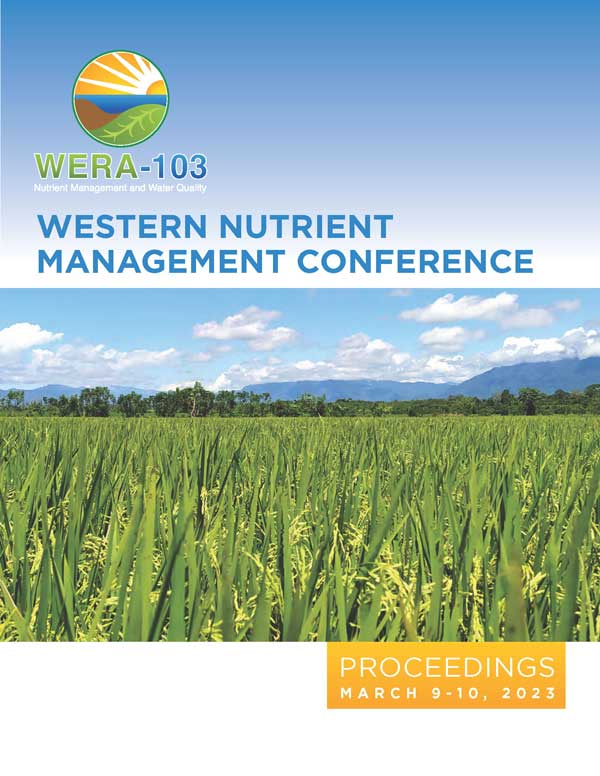Download the Conference Proceedings
Proceedings
Year
| Filter results3 paper(s) found. |
|---|
1. Agronomic Biosolids Application Rates for Dryland Wheat Across a Range of Northwest Climate ZonesPredicting agronomic rates is important to derive optimum economic and environmental benefits from biosolids fertilizer applications. We conducted this research to 1) evaluate dryland wheat response to biosolids applications over a range of climate zones in the Pacific Northwest and 2) compare agronomic application rates predicted from yield curves with those predicted from published extension guidance. We applied a range of biosolids rates during the fallow year in ten on-farm dryland wheat ... A. Bary, D. Sullivan, C. Cogger |
2. Cool Season Mineralization of Recalcitrant Organic N in Undisturbed Cores of Manured SoilsThe objectives of this study were to (1) quantify cool season N mineralization from recalcitrant organic N in soils with a long history of manure application and (2) examine the relationship between cool season recalcitrant organic N mineralization and a fall mineralizable N index. “Cool season” was defined as October to February for fields with winter crops and October to May for fields with no winter crops. Two in situ trials were conducted with undisturbed so... D. Moberg, D. Sullivan, R. Johnson |
3. Developing Extension Guidance for Management Effects on Ammonia Loss: a Computer Simulation Modeling ApproachComputer simulation models provide insight into ammonia loss processes and the sensitivity of ammonia loss predictions to environmental and management variables. As an example of how a simple computer simulation model can inform the Extension guideline development process, the ALFAM (Ammonia Volatilization from Field-Applied Animal Slurry) model was used to estimate NH3 loss from surface- applied municipal biosolids: liquid (3% dry matter) and dewatered (22% dry matter). Model ... D. Sullivan |
